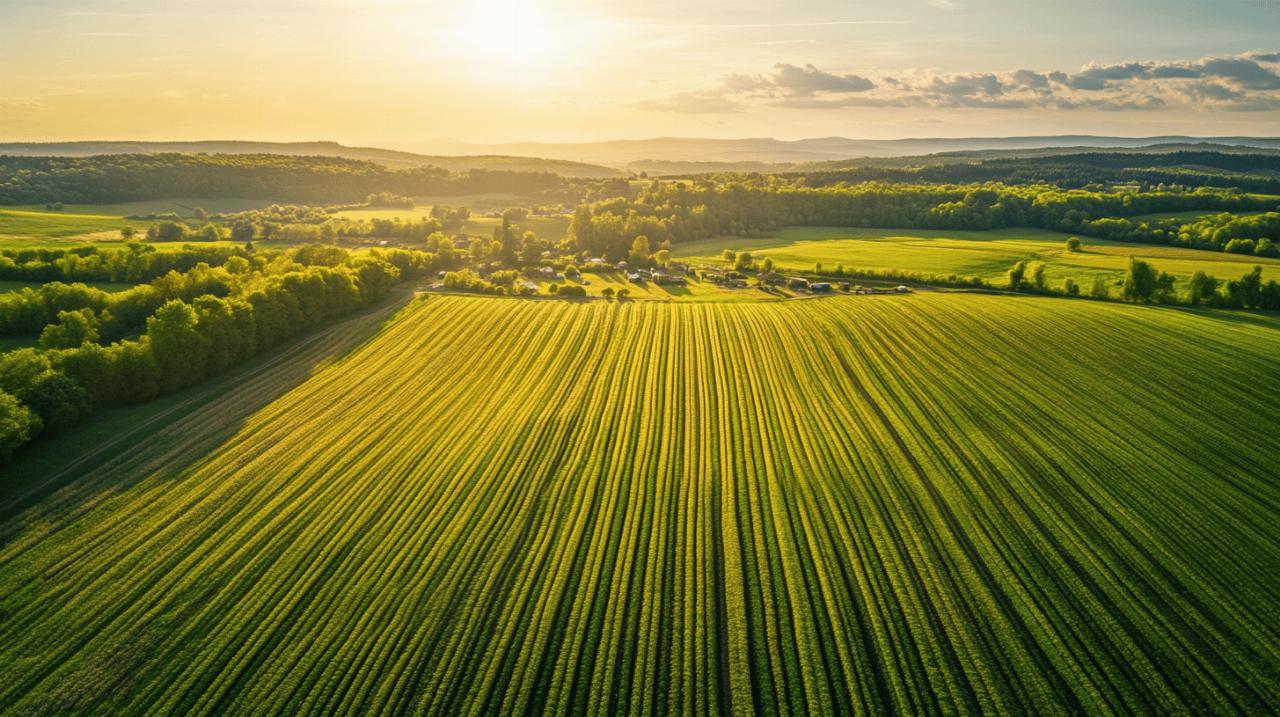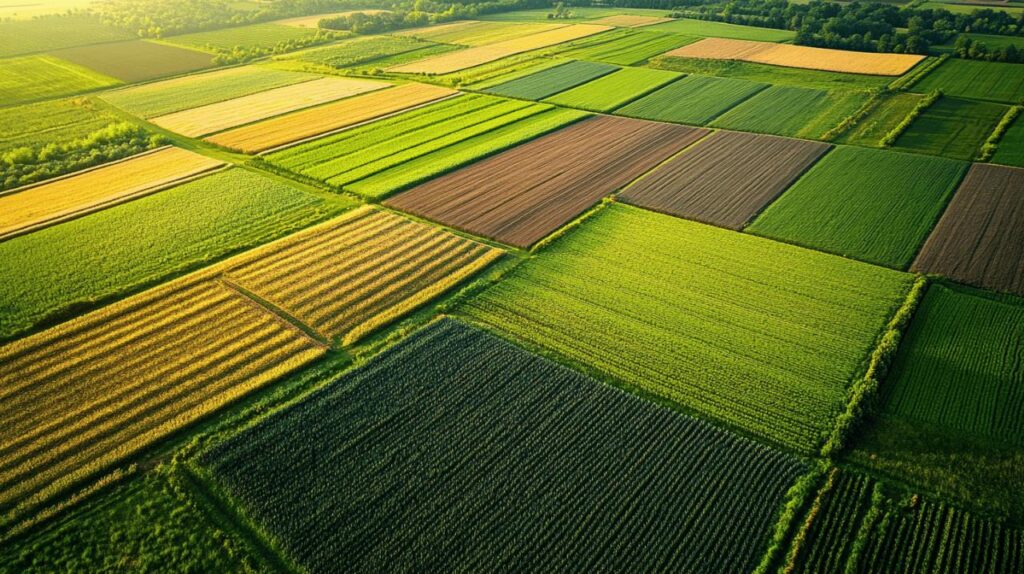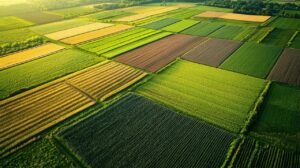Agriculture remains one of the most vital cornerstones of the European economy, providing employment, sustaining rural livelihoods, and ensuring food security across the continent. In 2024, the European Union's agricultural industry generated approximately 234.1 billion euros in gross value added, representing about 1.3 percent of the entire EU's GDP. Within this complex tapestry of farmland, livestock, and innovation, five nations stand out as the dominant forces. France, Germany, Italy, Spain, and the Netherlands collectively account for the majority of agricultural output in Europe, and their contributions extend far beyond mere production figures. These countries are not only feeding millions but also safeguarding the economic vitality of countless rural communities, ensuring that traditions, livelihoods, and landscapes endure in an era of rapid modernisation.
France and Germany: The Agricultural Powerhouses of Continental Europe
France's Agricultural Dominance and the Common Agricultural Policy
France is unquestionably the largest agricultural producer within the European Union, responsible for approximately 89.4 billion euros in agricultural output and representing around 19 percent of the EU's total agricultural production. The country's expansive farmland covers more than half of its total land area, making it the largest agricultural nation by both landmass and production value. French agriculture spans an impressive variety of sectors, from cereals such as wheat, maize, and barley to livestock production, including beef, pork, and dairy. Notably, France also stands as the world's largest wine producer, a title that carries both cultural and economic significance. The nation's food self-sufficiency rate is an impressive 129 percent, underscoring its capacity to feed its own population while exporting substantial quantities of produce worldwide.
The success of French agriculture cannot be divorced from the influence of the Common Agricultural Policy, the EU's overarching framework designed to support farming through subsidies, environmental protections, and rural development initiatives. The CAP provides critical financial assistance to family farms, helping stabilise income in the face of volatile markets and unpredictable weather patterns. French farming has evolved considerably over recent decades, with fewer but larger agricultural holdings dominating the landscape. While this consolidation has increased efficiency and productivity, it has also raised concerns about the decline in the number of small-scale farms and the social fabric of rural communities. Despite these challenges, the agricultural sector continues to underpin the economic vitality of many regions, particularly in central and southern France, where crops and livestock remain central to local identity and employment.
Germany's Technological Edge in Dairy and Arable Farming
Germany, contributing roughly 75.5 billion euros to the EU's agricultural output, stands as another formidable player in European agriculture. The German agricultural sector is characterised by its remarkable diversity, with a balanced focus on both crop and livestock production. Arable crops, including wheat, barley, maize, and potatoes, thrive across the northern plains and the fertile river valleys, while dairy and pig farming are particularly prominent in the western and southern regions. German farms are renowned for their meticulous management and significant investment in modern technology and infrastructure, which has allowed the country to achieve high levels of productivity despite facing labour shortages and the rising costs of inputs.
Precision agriculture has become a hallmark of German farming. The use of GPS-guided machinery, drones for crop monitoring, and data-driven decision-making tools allows farmers to optimise yields while minimising waste and environmental impact. Between 2009 and 2024, Germany was among the select few EU nations that managed to increase agricultural output while simultaneously reducing intermediate consumption, a testament to the efficiency gains made possible through technological innovation. This efficiency extends to the dairy sector, where German farms produce vast quantities of raw milk and cheese, ranking among the top producers globally. The integration of sustainable practices, including reduced pesticide use and better soil management, reflects a broader commitment to environmental stewardship. As the agricultural workforce continues to decline across Europe, Germany's reliance on automation and innovation positions it well for the future, ensuring that rural areas remain economically viable and productive.
Mediterranean excellence: italy and spain's agricultural contributions
Italy's Climate-Driven Success in Olive Groves and Vineyards
Italy's agricultural output, valued at approximately 75.4 billion euros, is deeply intertwined with its varied climate and rich culinary heritage. The country's Mediterranean conditions are ideally suited for cultivating a range of high-value crops, including tomatoes, grapes, olives, and citrus fruits. Italian agriculture is not merely about volume but rather about quality and tradition. The nation's vineyards and olive groves produce some of the world's most celebrated wines and olive oils, products that carry protected designations of origin and command premium prices on international markets. Beyond these iconic crops, Italy also has a significant presence in livestock production, with cattle, pigs, and sheep contributing to the nation's agricultural diversity.
Family farms remain the backbone of Italian agriculture, with 93 percent of all EU farms classified as family-run operations. However, the structure of Italian agriculture presents unique challenges. A considerable proportion of farms are small in scale, often under five hectares, and many operate with limited economic output. Despite this, Italy's agricultural sector contributes significantly to the EU's total standard output, thanks to the high value of its specialised crops. The Italian government, supported by CAP funding, has increasingly focused on sustainable agriculture practices, including crop rotation, integrated pest management, and organic farming. Organic farmland in the EU has grown from around 6.76 percent to over 10 percent, with Italy playing a leading role in this transition. These practices not only preserve soil fertility and reduce pesticide reliance but also align with consumer demand for environmentally friendly products, ensuring that Italian agriculture remains competitive and sustainable.
Spain's diverse output: from fruit production to livestock
Spain ranks fourth among Europe's largest agricultural producers, with an output valued at approximately 67.5 billion euros. The country's agricultural landscape is as diverse as its geography, spanning arid plains, coastal regions, and fertile river valleys. Spain excels in the production of olives, citrus fruits, grapes, and tomatoes, benefiting from a climate that allows for multiple growing seasons and high-quality yields. The country is also a major player in livestock farming, particularly in pork, beef, and poultry, with intensive production systems concentrated in the central and eastern regions. Spain's utilised agricultural area is one of the largest in the EU, accounting for 15.2 percent of the total, and its agricultural holdings range from small family farms to large commercial operations.
Innovation has been a key driver of Spain's agricultural success. The adoption of advanced irrigation techniques, including drip and precision irrigation, has allowed farmers to conserve water in a country where water scarcity is a growing concern. Spanish agriculture has also embraced modernisation in other areas, with increasing investment in farm machinery, improved logistics, and digital technologies that enhance productivity and market access. The role of the CAP in Spain cannot be overstated, as subsidies and rural development programmes have provided crucial support to farmers navigating economic pressures and environmental regulations. Spain's agricultural sector not only contributes significantly to the national economy but also sustains numerous rural communities, particularly in regions such as Andalusia, Castile, and Valencia, where agriculture remains a primary source of employment and cultural identity.
The netherlands: small nation, massive agricultural innovation
Cutting-edge horticulture and dairy efficiency
 The Netherlands, despite its modest size, has established itself as one of Europe's most formidable agricultural powers and is the largest agricultural exporter in the EU. Dutch agriculture is characterised by extraordinary efficiency, technological sophistication, and a focus on high-value products. Horticulture, particularly the cultivation of flowers, vegetables, and greenhouse crops, is a cornerstone of the Dutch agricultural economy. The country's dairy sector is equally impressive, producing vast quantities of milk, butter, and cheese for both domestic consumption and export. The Netherlands has consistently demonstrated that agricultural success is not solely determined by land area but rather by innovation, investment, and a commitment to excellence.
The Netherlands, despite its modest size, has established itself as one of Europe's most formidable agricultural powers and is the largest agricultural exporter in the EU. Dutch agriculture is characterised by extraordinary efficiency, technological sophistication, and a focus on high-value products. Horticulture, particularly the cultivation of flowers, vegetables, and greenhouse crops, is a cornerstone of the Dutch agricultural economy. The country's dairy sector is equally impressive, producing vast quantities of milk, butter, and cheese for both domestic consumption and export. The Netherlands has consistently demonstrated that agricultural success is not solely determined by land area but rather by innovation, investment, and a commitment to excellence.
Dutch farmers have embraced a model of intensive, technology-driven agriculture that maximises yields while minimising resource use. Greenhouses equipped with climate control systems, automated irrigation, and LED lighting allow for year-round production of tomatoes, peppers, and cucumbers, regardless of external weather conditions. The dairy sector has similarly benefited from advances in breeding, nutrition, and farm management, resulting in some of the highest milk yields per cow in the world. The Netherlands has also been a pioneer in sustainable farming practices, with initiatives aimed at reducing ammonia emissions, improving animal welfare, and increasing the share of organic farmland. Between 2009 and 2024, the Netherlands was one of only four EU countries to achieve growth in agricultural output alongside a decline in intermediate consumption, highlighting the remarkable efficiency gains achieved through innovation.
How dutch innovation maximises yields despite limited space
The success of Dutch agriculture is rooted in a culture of continuous improvement and a willingness to invest in research and development. Agricultural universities, research institutes, and private companies collaborate closely with farmers to develop new technologies and refine existing practices. Precision agriculture, which relies on data analytics, sensors, and satellite imagery, allows Dutch farmers to optimise every aspect of production, from planting and fertilisation to pest control and harvesting. This data-driven approach not only boosts productivity but also reduces environmental impact, aligning with EU goals for sustainability and environmental protection.
The Dutch model has attracted international attention and investment, with companies such as Kubota exploring opportunities in the Netherlands and across Europe to address global food security challenges. As the world's population is projected to reach 9.5 billion by 2050, the need for efficient, sustainable food production systems becomes ever more urgent. The Netherlands offers a compelling blueprint for how small nations with limited land can compete on the global stage, leveraging technology, innovation, and a commitment to quality. The economic benefits of this model extend beyond the farm gate, supporting a robust supply chain that includes logistics, processing, and retail, all of which contribute to rural and national prosperity.
Sustaining rural communities through european agricultural leadership
The Economic Impact of Agriculture on Rural Livelihoods
Agriculture is far more than a sector of the economy in Europe; it is a lifeline for millions of rural residents whose livelihoods depend on farming and related activities. In 2024, the agricultural labour input in the EU was equivalent to 7.6 million full-time workers, although this figure represents a significant decline from previous decades. Between 2009 and 2024, the EU lost the equivalent of 3.5 million full-time workers in agriculture, reflecting broader trends of farm consolidation, mechanisation, and urbanisation. Despite this decline, agricultural income per worker increased by 1.9 percent in 2024 and was 91.6 percent higher than in 2009, suggesting that those who remain in farming are, on average, more productive and better compensated.
Family farms, which account for 93 percent of all EU farms, are particularly important for rural communities. These operations often serve as the economic anchor for small towns and villages, providing employment, supporting local businesses, and maintaining cultural traditions. However, the structure of European agriculture is changing. A substantial number of farms, particularly those with standard output below 2,000 euros per year, contribute minimally to overall agricultural production, while a small number of large farms, representing just 3.3 percent of the total, generate over half of the EU's agricultural economic output. This polarisation raises important questions about equity, access to resources, and the future of small-scale farming. As farm sizes increase and productivity improves, rural GDP per capita has risen, yet poverty rates in rural areas remain stubbornly persistent, indicating that the benefits of agricultural modernisation are not evenly distributed.
EU Support Mechanisms and Their Role in Community Development
The Common Agricultural Policy remains the primary instrument through which the European Union supports its agricultural sector and rural communities. CAP subsidies provide direct payments to farmers, helping stabilise incomes in the face of market volatility and external shocks. These payments are particularly important for family farms, which often lack the financial reserves to weather poor harvests or sudden drops in commodity prices. In addition to direct payments, the CAP funds rural development programmes aimed at improving infrastructure, promoting sustainable practices, and diversifying rural economies. These initiatives have supported the growth of agritourism, organic farming, and value-added processing, creating new income streams and employment opportunities in rural areas.
However, the distribution of CAP funds has been a subject of debate. Larger farms, particularly those in countries such as the Czech Republic, Estonia, and Slovakia, receive a disproportionate share of subsidies, raising concerns about fairness and the long-term viability of smaller operations. Policymakers are increasingly recognising the need for tailored approaches that address the specific challenges faced by different types of farms and regions. For example, support for innovation and technology adoption is critical in countries such as Germany and the Netherlands, while efforts to combat poverty and improve market access are essential in regions with smaller, subsistence-oriented farms. The EU's commitment to environmental sustainability, including targets for organic farming and reductions in ammonia emissions, reflects a broader recognition that agriculture must evolve to meet the challenges of climate change and resource scarcity. As Europe's largest agricultural producers continue to lead the way, their success will depend not only on their ability to produce food efficiently but also on their capacity to sustain the rural communities that are the heart and soul of the European countryside.



